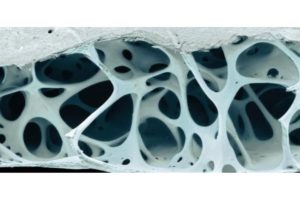My earliest childhood dream was to fly like a bird, traversing the skies, the oceans, the
mountains. But Nature didn’t bestow upon me with that power, because I am a mammal.
Although mammals are the most advanced animals, they lack the ability to fly. Their body is
not made for flying. Of course there are bats. But let’s agree, the bats cannot fly as efficiently
and elegantly as birds!

So what makes birds fly?
To answer this question we need to look at the outer features, morphology, and the internal
structure, anatomy of a bird. We also need a little knowledge about the physics involved in
flying.
To fly efficiently through the air, it is utmost necessary to have as little air-resistance as
possible. A perfect shape required to achieve that is spindle shape, essentially a tube with
the ends tapering. Further modification makes it more streamline. This way the air is cut at a
smallest point and bifurcates above and below the body. If the speed of the body is fast
enough, the gravitational force dragging the body towards the ground is balanced by the air
current lifting the body. Now the body is stable in the air.

The bird’s whole body is covered with feathers. Close inspection reveals that all the feathers
are not alike. Some feathers are tiny, curly hairlike, the others have various sizes of perfect
airfoil. From insulating the body to breaking air turbulence, and from moving forward to
taking off and landing, all functions are carried out by different sets of feathers.
Although the aerodynamic shape of the body donned with feathers is an important flight
feature, a much more significant attribute is body weight. The more the body weight is, the
more energy is required to lift and keep it floating in the air. Therefore, nature has
compromised in some of the organs, even in some systems, and has modified a few.
Most of the skeleton of birds is made up of hollow and spongy bones. The tiny pockets in the
bones are filled with air. This modification reduces the overall weight of the body. A good
example would be a Pelican. This huge bird weighs approximately 9 to 10kg, but the
skeleton weighs merely 500g! More efficient flyers have more hollow bones. Besides the
light weight skeleton, birds have gotten rid of heavy jaw bones and muscles. The missing
jaws and teeth could be a problem in digestion. The solution to this problem is ingenious,
they have a grinder-like organ, called a gizzard, attached to the food pipe. It works like a mill
and churns the food in small particles!
To reduce the weight further, birds’ respiratory system is also modified to form air sacs
throughout the body. Once air is filled in them, the buoyancy of the body increases, very
similar to a balloon filled with air. These air sacs are positioned in such a way that during
respiration the air flows in a unidirectional path, ensuring continuous supply of fresh air to the
body tissue. (We mammals have bidirectional air flow during respiration and need to wait
until the stale air is expelled out and the fresh air comes in!)
Birds have dispensed with some of the organs entirely. They do have kidneys and ureters,
but lack a urinary bladder. The excretory product is uric acid which requires very less or no
water at all. Thus extra load of water storage is avoided in the body. Another modification is
seen in female birds. They have a single ovary (usually left) and corresponding oviduct.
So much for the modification, since even though birds have significantly reduced the weight
(as compared to other animals with similar size), a tremendous effort and energy are
required to take off and remain flying.
The pectoral girdles, or the shoulder bones of the bird work with strong, powerful pectoral
muscles or flight muscles. These muscles are attached to a hook-like structure called a
keel, specially designed sternum (breast bone). These muscles enable the bird to move the
wings powerfully to get the lift and necessary thrust to move ahead.
This incredible machine, of course, needs a load of energy. A very high rate of metabolism
(burning the body fuel) ensures a continuous supply of energy. A four chambered heart, like
that of mammals, not only keeps oxygenated and deoxygenated separated but it beats pretty
fast. The resting heart rate for a typical bird can be 130-150 beats per minute, and that of a
hummingbird (europe) or sunbird (asia) can reach up to 1200 beats per minute, during flight!
Once you have all these peculiarities, the sky is the limit!


Recent Comments